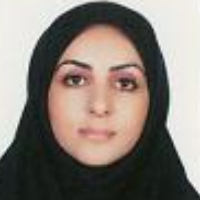Analytical study of visual features and structural elements of the circular motif in a painting known as Shams of the late Qajar period preserved in the Astan Quds Razavi Museum
The Qajar period is one of the brightest periods in painting, and religious painting is one of its branches. Some of these paintings have been made for the king in high quality and on silk canvases. One of these examples is the Ashura painting of Shams, which is kept in the Astan Quds Razavi Museum, and has not been studied yet. This painting has a circular composition and unlike other paintings, it is not horizontal and is circular and based on the composition of the circle, and the circle motif is used symbolically in the geometric substructure of the work. The purpose of this study is a case study and analysis of Shams Ashura painting based on circular composition. Questions of this research are: 1- What are the visual features and structural elements in the composition of this painting? 2- What is the role of the circle in the composition of the work? The content of the present study is qualitative and is based on descriptive-analytical methodology and library research data collection method. The results show that the composition of this painting is new and unique, and is based on conscious and purposeful geometric divisions based on a circle. The painter has used symmetrical geometric divisions with circles to focus on the central point of the image, Imam Hussein. The geometric divisions of the circles, their relationship, the concurrence of vision and conveying the concept of plurality in unity are based on the circular geometric structure of the work. At the end of this study, it is concluded that this composition is different from the traditional type of Ashura horizontal rectangular composition and shows a new type of painting that is unique and introduces Shams as a special and different artist in painting. It well puts the Ashura event together in separate plans, emphasizing the simultaneity of Iranian painting in the past. This painting is a unique and different example that was created in the Qajar period and was probably based on the size, quality, type of painting, and composition of custom works from Ashura to court use. The artist works to use them consciously and purposefully in combination. The circular layout uses the geometry and pattern of the circle. In this study, it was found out that the geometric divisions in this work were not accidental and the work has a geometric substructure based on the circle. The painter used geometric divisions and relationships between eight circles to focus on the original highest point of the painting that is the last farewell, and it is emphasized by using geometric divisions. In addition to the mystical dimension, it is a symbolic geometric motif that shows the relationships between divisions, the relationship of small circles, the eight main circles, and the focus on the main circle as well as the focal point of the image. Geometric knowledge, correct and accurate use of circles in place of mesh in the geometric substructure of the work, and the conscious use of eight circles next to the main circle have helped expressing the main theme of the painting. The cognitive level of the image of the circle in the Ashura painting of Shams should be considered as a manifestation of the Qajar-period artist's worldview. The theme of Ashura is emphasized as an intuitive symbol in painting, and is therefore based entirely on the core of the universe and the repetition and continuity of time and place. Circular symbolic interpretation at the center of the image completes the image's resolution, balance, harmony, unity or geometry of the image. The events are fully illustrated and, if they fit in with the religious books in the first part of the article, the story of the artist's awareness and nobility of this Shiite religious event is illustrated. The coloring in this painting is very precise and conscious. Colors with muted tones are used. The tones are very harmonious and white is used in the painting for the breathing space in the image. The coloring in this image is flat, and the black font can be seen around the images. The design of human figures is very precise and with the skill of the artist, this number of figures is depicted in small circles. Recognition of independent sculpture and portraiture in each sculpture shows that the artist had the necessary knowledge for painting and the figures were well arranged according to the narratives. The composition of this painting is the most important feature of this painting, which is circular and is a different composition in the field of Ashura curtains.
- حق عضویت دریافتی صرف حمایت از نشریات عضو و نگهداری، تکمیل و توسعه مگیران میشود.
- پرداخت حق اشتراک و دانلود مقالات اجازه بازنشر آن در سایر رسانههای چاپی و دیجیتال را به کاربر نمیدهد.



